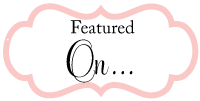
Ever since I can remember, I have had the privilege of setting the table for every major holiday. This tradition is something I am going to pass along to my daughters and I am grateful for my mother, who taught me how to set a beautiful table and let me use all her fine china and crystal because I was more precious to her than any fine possessions.
I had a request to write about table settings (place settings). This subject was one I was planning on covering at some point, but I'm happy to oblige requests. I have included a diagram for your convenience and then I'll have some tips for you.
I had a friend graciously share her trick with me after my confusion at a dinner party where we were sitting at a round table. There isn't much personal space at a round table and therefore it's very difficult to tell who's drink is who's and who's bread is who's. Here's a sure way to tell every time: Make the "okay" sign with both hands and your left hand will form a "b" bread, and your right hand, a "d" drink. Bread on your left, drink on your right (you can do this discreetly under the table).

Utensils- Start from the outside and work your way in. Usually the big spoon is for soup, the big fork is for dinner, and any utensils above the plate are for dessert.When a utensil has been used, it never goes back on the table. When you're taking a break, rest your fork and knife entirely on the plate, facing each other at "8 o'clock" and "4 o'clock". When you are finished, place them diagonally on the plate, side by side, with the handles at "4 o'clock". The knife blade should face the center of the plate, not point out toward another guest (an ancient sign of aggression) that is also good to remember when setting a table-knife blade in. You can print out this table setting guide and place it on the inside of a cupboard until it's easy to remember.
Servers will usually serve from the left and remove from the right. You may indicate that you're ready to order by simply closing your menu and placing it in front of you. You may indicate you are finished with your meal as indicated above, with your utensils and slightly moving your plate away from you. If you are leaving the table but are planning to return, place your napkin in the chair; if you are finished with your meal and are leaving the table, place your napkin on your left-next to your plate, indicating that you are finished. If you are in a home, wait for the host/hostess to place their napkin before placing yours-if in doubt, always wait for the host/hostess in a home for direction and do what they do. If you are in a restaurant, you may place your napkin in your lap immediately after being seated.
Other tidbits- You may rest your forearms on the table. If you want to rest your elbows on the table, this is acceptable as long as you're not using them as a way to get food into your mouth faster. Best rule of thumb is if you're eating, elbows off, if you're talking, elbows on or elbows okay. Again-if you must answer your cell phone, excuse yourself from the table if at all possible. Remember, at a dinner party, there are many people there; don't monopolize the conversation: always listen more than you are talking. Be attentive and polite to everyone at the table and if there is someone you don't know and the host/hostess has forgotten to introduce everyone, introduce yourself to anyone you don't know.
This barely scratches the surface of table etiquette/dining manners, but I hope this is helpful. I'm sure I'll write about it again and the videos to the left are actually very helpful even though they're more than fifty years old, manners never go out of style!











1 comment:
Thank you! Very informative!!! I love the picture and all the helpful tips!
Post a Comment